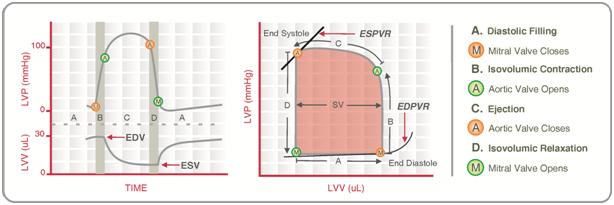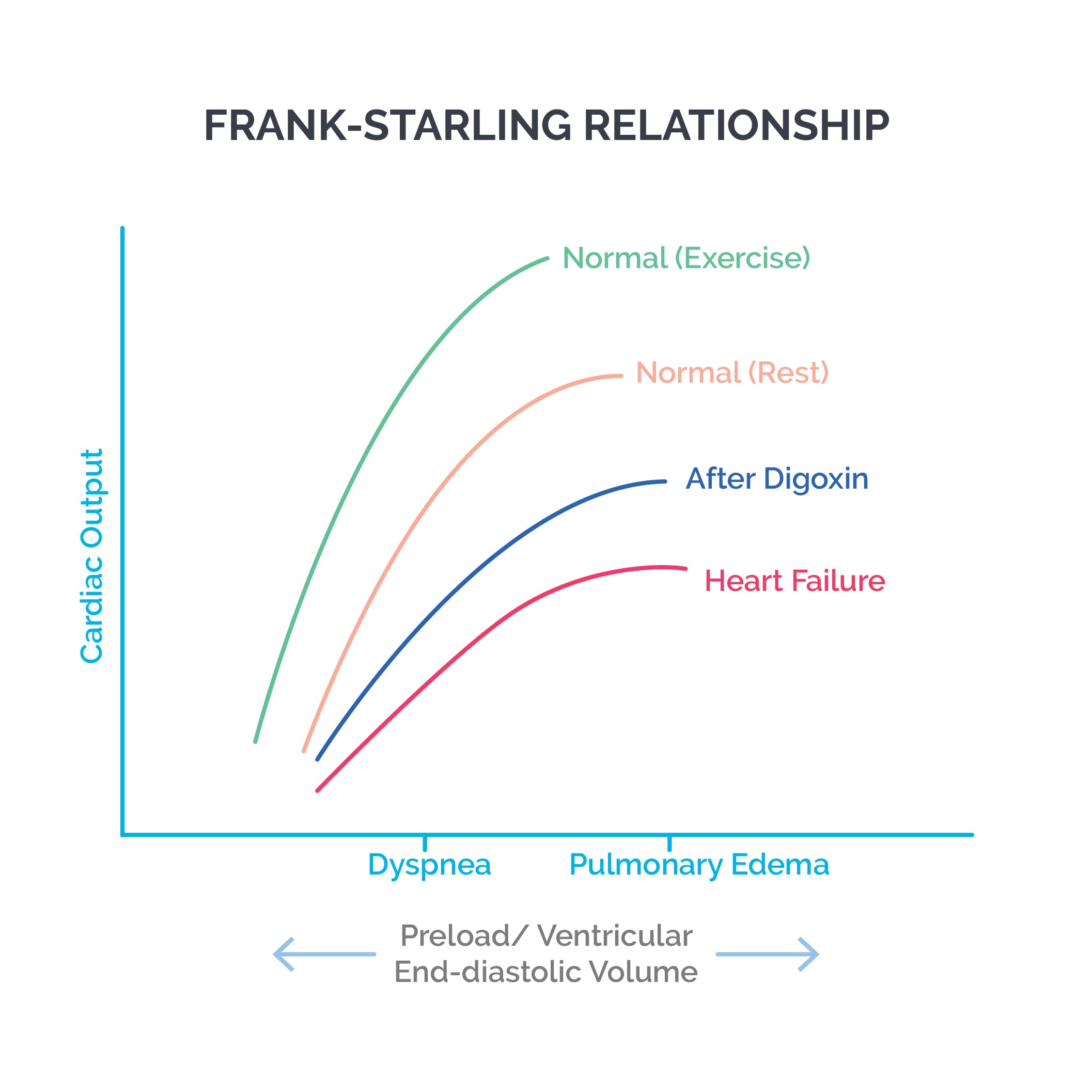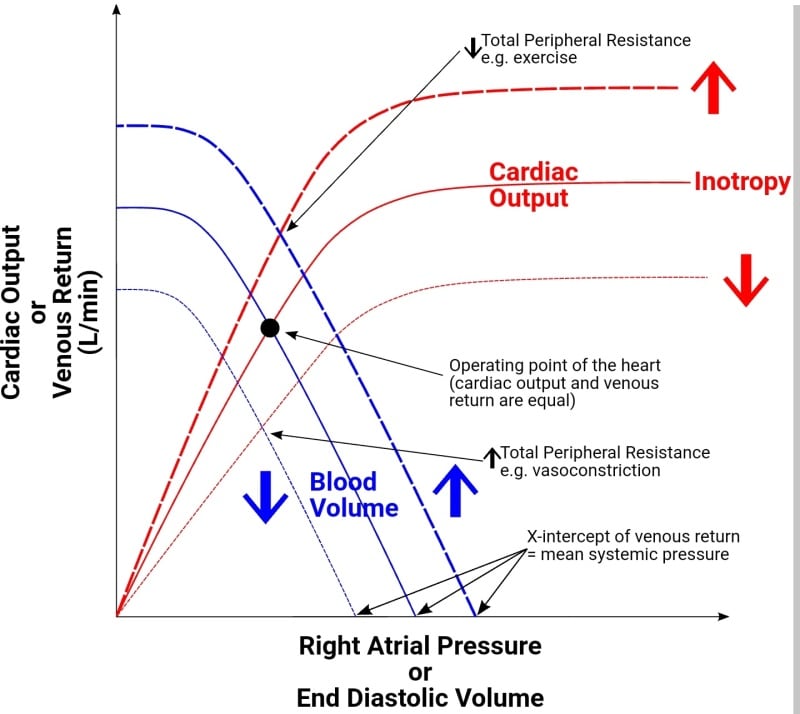Ventricular pressure-volume loops: In a ventricular pressure-volume loop, the ventricular pressure is plotted against the ventricular volume. It gives an insight into the overall ventricular function in a cardiac cycle. There are four crucial points on the curve - 1, 2 , 3, and 4 which correspond to the opening or closing of valves. They are as follows:
Point 1: Closing of the mitral valve
Point 2: Opening of the aortic valve
Point 3: Closing of the aortic valve
Point 4: Opening of the mitral valve

Systole extends from point 1 to point 3 while diastole extends from point 3 to point 1.
Four phases of the ventricle can be seen on the pressure-volume loop (they correspond to the cardiac cycle) as follows:
Isovolumetric contraction: Extends from point 1 to point 2 i.e. from mitral valve closure to opening of the aortic valve.
Ejection: Extends from point 2 to point 3 i.e. from aortic valve opening to aortic valve closure.
Isovolumetric relaxation: It extends from point 3 to point 4 i.e. from aortic valve closure to mitral valve opening.
Ventricular filling: It extends from point 4 to point 1 i.e. from mitral valve opening to mitral valve closure.
The volume at point 1 corresponds to the EDV while the volume at point 3 and 4 (both volumes are the same) corresponds to the ESV. Stroke volume can be calculated by subtracting ESV from EDV, in other words, the width of the loop corresponds to the stroke volume. When stroke volume decreases, the loop becomes narrower. The peak systolic pressure (PSP) is attained during the phase of ejection and it is located at the apex of the loop. When the afterload on the left ventricle increases e.g. in systemic hypertension, the PSP increases and the loop will be taller.
Factors affecting the pressure-volume loop: The following factors change the morphology of the pressure-volume loops.
Cardiac and vascular function curves: Cardiac function curve is plotted with right atrial pressure on the X axis and cardiac output on the Y axis. As the right atrial pressure rises with increasing venous return the cardiac output rises proportionately. The curve shifts inferiorly and to the right when cardiac performance is depressed e.g. in decreased heart rate, decreased contractility and increased afterload; while it shifts up and to the left when cardiac performance improves e.g. increased heart rate, increased contractility (positive inotropy) and decreased afterload.

The vascular function curve is obtained by plotting the right atrial pressure on the X axis against the venous return on the Y axis. When the right atrial pressure becomes too negative, the veins collapse hence impeding venous return to the heart. The point at which the vascular function curve meets the X axis corresponds to the mean systemic pressure. It is the pressure that would be measured in the cardiovascular system if the heart were stopped. When blood volume is increased or venous compliance is decreased e.g. in venoconstriction, the curve shifts to the right. The opposite effects are seen in decreased blood volume or venodilation. Increase in systemic vascular resistance (SVR) decreases the slope of the curve while opposite effects are seen when SVR decreases. In sympathetic stimulation both SVR and venoconstriction will shift the curve to the right and also decrease the slope.

When the cardiac and vascular function curves are plotted on the same graph they intersect at a point which corresponds to the cardiac output (on the Y axis) and right atrial pressure (on the X axis). Some factors will affect the cardiac function curve, others will affect the vascular function curve while some will change both curves. Changes in total peripheral resistance or TPR will affect both cardiac and vascular function curves. Increase in TPR which is caused by arteriolar constriction, will lead to increased afterload and also reduced venous return, which causes both cardiac and vascular function curves to shift downwards. Decreased TPR will shift both curves upwards caused by decreased afterload and increased venous return.
Sign up for free to take 8 quiz questions on this topic